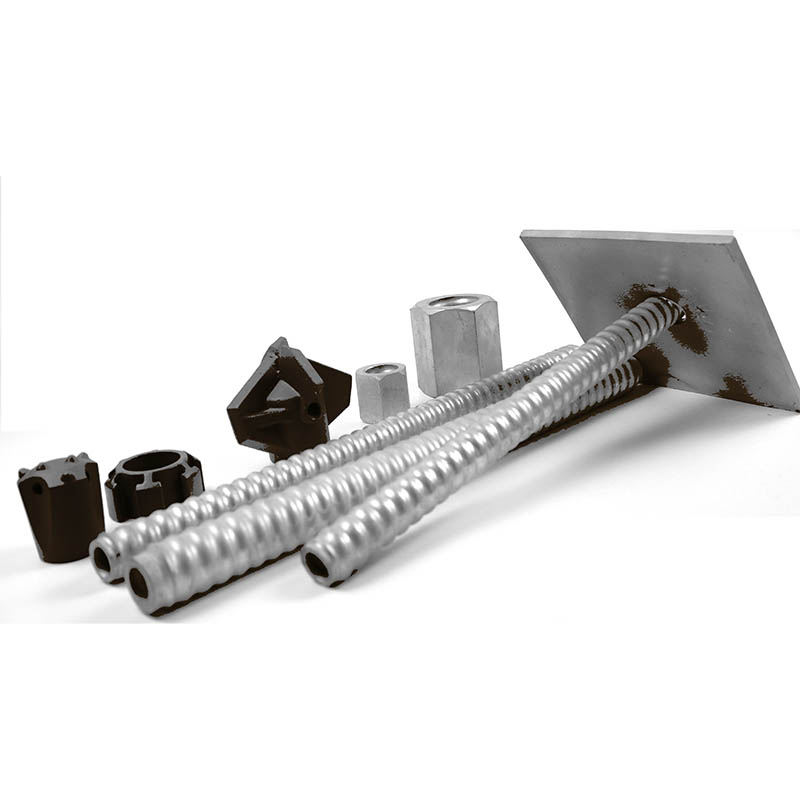目录
ONTON Bolt’s product line features cutting-edge solutions in the realm of construction, including hollow bar micropiles. In this comprehensive guide, we delve into the world of hollow bar micropiles, their specifications, and how they revolutionize foundation construction in various industries.
Understanding Hollow Bar Micropile:
A Structural Marvel
Hollow bar micropile specifications are a type of deep foundation element designed to transfer structural loads to deeper, more competent soil or rock layers. They consist of a hollow steel bar with threaded connections that allow for easy installation using drilling techniques. This innovative technology has gained popularity due to its versatility, strength, and ability to address challenging soil conditions.
Benefits of Hollow Bar Micropile:
Strength, Versatility, and Efficiency
The benefits of using hollow bar micropile are manifold. They offer superior load-bearing capacity, making them ideal for projects requiring high structural stability. Their small diameter and minimal footprint make them suitable for restricted access sites where traditional foundation methods may be impractical. Additionally, hollow bar micropiles can be installed quickly and efficiently, reducing construction time and costs.
Micropiles Specifications:
Key Parameters for Successful Installation
When considering hollow bar micropiles for a project, several micropiles specifications must be taken into account. These include:
- Diameter: Typically ranging from 25 mm to 127mm, depending on the load requirements and soil conditions.
- Material Grade: High-strength steel, such as ASTM A615 or equivalent, ensuring durability and performance.
- Thread Type: Ror T threads for efficient installation and load transfer.
- Corrosion Protection: Options like epoxy coatings or stainless steel for longevity in corrosive environments.
- Load Capacity: Determined through engineering analysis and testing to ensure structural integrity.
- Installation Method: Drilling techniques, such as rotary drilling or percussion drilling, are tailored to site conditions.
Applications of Hollow Bar Micropile:
Versatility Across Industries
Hollow bar micropile finds applications in various industries and projects, including:
- Building Foundations: Providing support for structures in urban areas with limited space.
- Bridge and Infrastructure Projects: Reinforcing bridge abutments and retaining walls.
- Slope Stabilization: Preventing soil erosion and landslides in hilly terrain.
- Industrial and Commercial Developments: Supporting heavy machinery and equipment.
- Retrofitting and Rehabilitation: Strengthening existing structures for increased load capacity.
Installation Process of Micropile:
Ensuring Stability and Performance
The installation of hollow bar micropiles follows a systematic process:
- Site Investigation: Assessing soil conditions and load requirements.
- Design Engineering: Determining pile diameter, length, and spacing based on analysis.
- Drilling: Using specialized equipment to create boreholes for pile installation.
- Grouting: Injecting grout into the pile cavity to enhance load transfer and stability.
- Load Testing: Conducting load tests to verify pile capacity and performance.
- Quality Assurance: Monitoring installation procedures and material specifications.
Quality Assurance and Testing:
Meeting Industry Standards
ONTON Bolt adheres to industry standards and best practices in the manufacturing and installation of hollow bar micropiles. Quality assurance measures include:
- Material Testing: Ensuring compliance with ASTM A615 or equivalent standards for steel quality.
- Installation Supervision: Experienced engineers oversee drilling, grouting, and testing processes.
- Load Testing: Conducting static and dynamic load tests to validate design assumptions.
- Documentation and Reporting: Providing comprehensive reports on pile installation and performance.
Future Trends in Micropile Technology:
Advancements and Innovations
The field of micropile technology continues to evolve with advancements in materials, design techniques, and installation methods. Future trends may include:
- Improved Corrosion Protection: Development of advanced coatings and materials for enhanced durability.
- Enhanced Load Capacity: Innovations in pile design and reinforcement for higher load-bearing capacity.
- Sustainable Practices: Integration of eco-friendly materials and construction methods.
- Digitalization: Utilizing digital tools for real-time monitoring and data analysis during pile installation and performance monitoring.
By staying abreast of these trends, ONTON Bolt remains at the forefront of micropile technology, offering clients innovative solutions for their construction projects.
0






